Home>diy>Building & Construction>What Is The First Step To Building A House
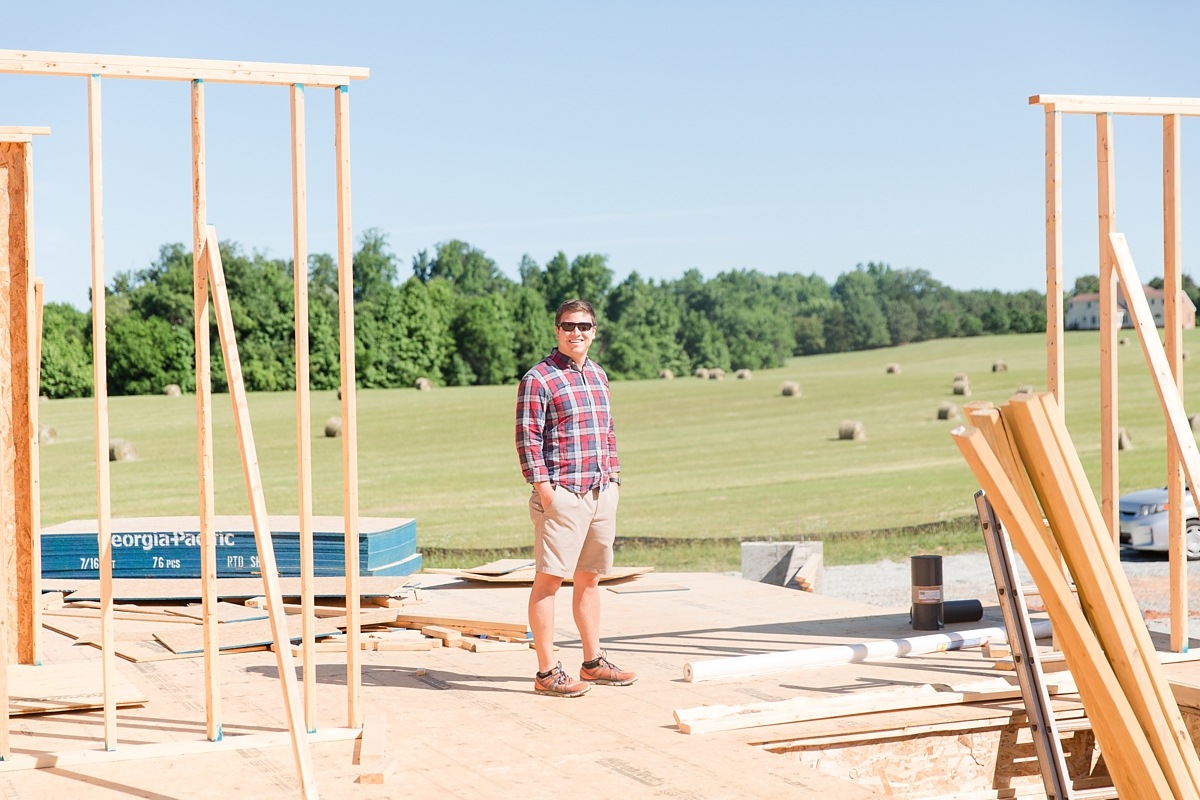

Building & Construction
What Is The First Step To Building A House
Modified: September 1, 2024
The first step to building a house is proper planning and understanding the building construction process. Learn more about the essential steps involved.
(Many of the links in this article redirect to a specific reviewed product. Your purchase of these products through affiliate links helps to generate commission for Storables.com, at no extra cost. Learn more)
Introduction
Building a house is a dream for many people. It is not only a place to call home but also a reflection of one’s personal style and taste. Whether you are building a small cottage or a grand mansion, the process of constructing a house requires planning, coordination, and expertise in the field of building construction.
In this article, we will explore the step-by-step process of building a house, from the initial planning stages to the final touches. Whether you are a first-time homeowner or someone looking to undertake a new construction project, understanding the building process will help you make informed decisions and ensure the successful completion of your dream home.
Building a house is a complex task that involves various stages, each with its own unique challenges and considerations. By breaking down the process into manageable steps, we will provide you with an overview of what to expect and how to navigate through the construction journey effectively.
From assessing your needs and budget to finding a suitable location, hiring professionals, obtaining permits, and overseeing the construction process, each step contributes to the overall success of your project. Throughout this article, we will emphasize the importance of thorough planning, attention to detail, and effective communication with the various stakeholders involved in the construction process.
By the end of this article, you will have a comprehensive understanding of the first steps involved in building a house and will be better equipped to embark on your own construction project with confidence.
So, let’s dive in and uncover the exciting world of building construction!
Key Takeaways:
- Thorough planning, collaboration with professionals, and attention to detail are essential for successfully navigating the complex process of building a house, ensuring the creation of a dream home that reflects personal style and taste.
- The final inspections and completion stage are crucial to ensure that the new home meets all safety and quality standards, providing peace of mind and legal validation for the proud owners of a thoughtfully constructed and beautifully finished home.
Read more: What Are The Steps In Building A House
Understanding the Building Process
Before diving into the nitty-gritty details of constructing a house, it’s important to have a basic understanding of the building process. Building a house involves a series of sequential steps, each building upon the previous one, to ensure a successful and efficient construction project.
The building process typically begins with assessing your needs and budget. This step involves determining the size and layout of your house, as well as establishing a realistic budget that takes into account factors such as materials, labor costs, and additional expenses.
Once you have a clear idea of your needs and budget, the next step is to find a suitable location for your new home. Factors to consider include proximity to amenities, access to transportation, and the overall appeal of the neighborhood.
With the location secured, the next step is to hire an architect or designer. These professionals will work closely with you to create a plan that aligns with your vision, incorporates your desired features, and complies with local building codes and regulations.
Obtaining necessary permits and approvals is a critical step in the building process. This involves submitting your plans to the relevant local authorities for review and obtaining the required permits before construction can commence. It’s important to ensure compliance with all applicable rules and regulations to avoid delays and potential legal issues.
Once your plans are approved and permits are obtained, the next step is to develop a construction plan. This includes creating a timeline, scheduling the various tasks, and coordinating with contractors and subcontractors.
Selecting a reliable contractor and subcontractors is crucial for the successful execution of your construction project. Look for professionals with a proven track record, relevant experience, and good references. Request detailed proposals and compare them to make an informed decision.
With the team in place, the site preparation and foundation construction begin. This involves clearing the land, preparing the site, and laying the foundation, which serves as the base for your house. It’s essential to ensure that the foundation is sturdy and properly built to support the structure.
Once the foundation is in place, the framing and exterior construction can commence. This includes erecting the walls, roof, and installing windows and doors. It’s an exciting phase as you begin to see your house take shape.
The next steps involve the installation of plumbing and electrical systems. This includes laying pipes, installing fixtures, electrical wiring, outlets, and switches according to the plan and specifications.
With the interior design and finishing touches, you can now bring your personal style into the house. This stage includes selecting flooring, paint colors, cabinetry, and other decorative elements that reflect your taste and preferences.
Final inspections are conducted to ensure that the construction meets the required standards, codes, and regulations. Once all inspections pass, you are ready for the final step: completion. This involves obtaining the occupancy certificate, making any necessary adjustments, and officially moving into your new home.
Understanding the building process is essential for successfully navigating through the numerous steps involved in constructing a house. By following a logical sequence and working with experienced professionals, you can turn your dream home into a reality.
Assessing Your Needs and Budget
Building a house starts with a clear assessment of your needs and budget. This step lays the foundation for the entire construction project and ensures that the end result aligns with your vision and financial capabilities.
The first aspect to consider is the size and layout of your house. Take into account the number of bedrooms, bathrooms, living spaces, and any specific features or amenities you desire. Consider your current lifestyle, as well as any foreseeable future changes that may impact your space requirements, such as the addition of a home office or expansion of the family.
Once you have a basic understanding of your needs, it’s time to establish a realistic budget. Assess your financial situation and determine how much you are willing and able to spend on the construction of your house. Consider not only the initial construction costs but also other expenses such as land acquisition, permits, professional fees, and contingencies.
It’s crucial to be realistic and avoid overstretching your finances. Take into account any potential unexpected expenses that may arise during the construction process, such as site remediation or unforeseen structural issues. Leaving some room in your budget for contingencies will help mitigate the risk of financial strain and allow for flexibility throughout the project.
In addition to the construction costs, consider the long-term expenses associated with owning and maintaining a house. This includes ongoing property taxes, utility bills, insurance, and regular maintenance and repair costs. Factor in these expenses when calculating your overall budget to ensure a comprehensive understanding of the financial commitment involved.
Consulting with a financial advisor or mortgage specialist can be beneficial in determining your budget. They can help evaluate your finances, assess your borrowing capacity, and provide guidance on the most suitable financing options available to you.
Remember that your budget does not solely dictate the size or quality of your house. It also influences the selection of materials, finishes, and other design elements. Work closely with your architect or designer to establish a balance between your desired features and your budget constraints. They can offer creative solutions and suggest cost-effective alternatives without compromising on the overall aesthetic and functionality of your house.
Regularly reassess your needs and budget throughout the construction process. As decisions are made and costs are finalized, it’s important to check if they align with your original vision and financial plan. This will prevent any surprises or setbacks down the line and ensure that the project stays on track.
By thoroughly assessing your needs and budget, you set the stage for a successful construction project that meets your expectations and provides a comfortable and sustainable home for you and your family.
Finding a Suitable Location
Choosing the right location for your new house is a crucial step in the construction process. The location not only determines the accessibility and convenience of your home but can also impact its future value and quality of life. Here are some essential considerations when finding a suitable location for your house.
Proximity to amenities: Look for a location that is conveniently located near essential amenities such as schools, hospitals, supermarkets, and recreational facilities. The proximity to these amenities will enhance your quality of life and make daily tasks more convenient.
Transportation access: Consider the accessibility of the location in terms of transportation networks. Ensure that the area has good connectivity to major roads, highways, and public transportation options. This is particularly important if you commute to work or have a need for frequent travel.
Safety and security: Research the safety levels of the neighborhood and evaluate the security measures in place. Look for low crime rates and consider factors such as street lighting, presence of security cameras, and gated communities. Safety is paramount for the well-being of your family and the protection of your property.
Environmental factors: Assess the environmental factors surrounding the location. Consider factors such as air quality, noise pollution, and exposure to natural hazards like flooding or earthquakes. Research the history of the area to understand any environmental risks that may impact the livability and safety of your home.
Nature and green spaces: Consider the presence of parks, green spaces, and natural scenery in the surrounding area. Being close to nature can provide numerous benefits, including improved mental well-being and recreational opportunities.
Neighborhood appeal: Evaluate the overall appeal and character of the neighborhood. Look for well-maintained properties, clean streets, and a sense of community. Consider factors such as nearby amenities, quality of schools, and the desirability of the area in terms of future property value.
Future development plans: Research any future development plans or changes that may affect the area. This could include upcoming infrastructure projects, zoning changes, or commercial developments. Knowing this information can help you assess the long-term potential and sustainability of the location.
Consulting a local real estate agent or engaging with the community can provide invaluable insights into finding the right location. They can offer guidance on the best neighborhoods, market trends, and potential growth opportunities in the area you are considering.
Remember that finding a suitable location is a highly personal decision and should align with your lifestyle, preferences, and specific needs. Take the time to explore different areas, visit potential locations, and consider how they fit into your overall vision for your new house.
By carefully considering these factors, you can find a suitable location that meets your requirements and sets the stage for a successful construction project and a fulfilling living experience for years to come.
Hiring an Architect or Designer
When embarking on a construction project, hiring an architect or designer is a crucial step to ensure the successful realization of your vision. These professionals bring expertise, creativity, and technical knowledge to the table, helping you transform your ideas into a well-designed and functional home. Here are some key considerations when hiring an architect or designer for your house construction.
1. Professional qualifications: Look for architects or designers who are licensed and have the necessary qualifications and certifications. They should have relevant experience in residential construction and a solid understanding of building codes, regulations, and industry standards.
2. Portfolio and style: Review their portfolio to get a sense of their previous work and design style. You want to find an architect or designer who aligns with your aesthetic preferences and has experience in creating the type of home you envision. Consider their versatility and ability to adapt their style to meet your specific requirements.
3. Communication and collaboration: Building a house is a collaborative process, so it’s essential to find an architect or designer who values open communication and collaboration. Look for professionals who actively listen to your ideas, provide valuable insights, and are responsive to your questions and concerns. Building a strong and trusting working relationship is vital for a successful project.
4. Budget considerations: Discuss your budget with potential architects or designers and ensure that they have experience working within similar financial parameters. A skilled professional will be able to provide creative solutions and value engineering options that align with your budget while still delivering on your desired design and functionality.
5. References and testimonials: Request references or testimonials from previous clients. Reach out to these references and inquire about their experience working with the architect or designer. This will give you valuable insights into the professional’s reliability, work ethic, and ability to meet deadlines.
6. Understanding of your needs: A good architect or designer will take the time to understand your lifestyle, preferences, and specific needs. They will ask questions about your daily routines, family dynamics, and any special considerations. This understanding will enable them to design a house that not only meets your aesthetic desires but also functions well for your unique requirements.
7. Knowledge of sustainable design: In today’s environmentally conscious world, consider hiring an architect or designer who has knowledge and experience in sustainable design practices. They can incorporate energy-efficient features, sustainable materials, and environmentally friendly design principles into your house, providing long-term benefits for both the environment and your wallet.
8. Contract and scope of work: Before hiring, ensure that the architect or designer provides a detailed contract outlining the scope of work, fees, payment schedule, and any other relevant terms and conditions. This contract will protect both parties and provide clarity on expectations throughout the project.
Hiring an architect or designer is an essential investment in the success of your construction project. With their expertise and guidance, you can transform your vision into a well-designed, functional, and aesthetically pleasing home that meets your needs and reflects your personal style.
Obtaining Necessary Permits and Approvals
Before construction can begin on your new house, it is crucial to obtain the necessary permits and approvals from the local authorities. These permits ensure that your construction project adheres to all relevant building codes, regulations, and zoning requirements. Here are some key steps to follow when obtaining permits and approvals for your house construction.
1. Research local regulations: Start by researching the building codes and regulations specific to your location. Each jurisdiction has its own set of requirements regarding building size, setbacks, height restrictions, plumbing, electrical systems, and more. Familiarize yourself with these regulations to ensure compliance throughout the construction process.
2. Engage with the local building department: Contact the local building department or planning commission for guidance on the necessary permits and approvals. Speak to a representative about your construction plans and seek their advice on the specific permits required for your project.
3. Prepare necessary documentation: Typically, you will need to provide several documents as part of the permit application process. This may include architectural drawings, engineering plans, site plans, and specifications. Work closely with your architect or designer to gather all the required documentation accurately.
4. Submit permit application: Fill out the permit application form and submit it to the relevant local authority, along with the required documentation. Pay any applicable fees associated with the permit application. Keep in mind that the review process may take some time, so it is important to submit your application well in advance of your desired construction start date.
5. Plan review and amendments: Once your application is submitted, the local authority will review your plans and documentation. They may request revisions or amendments to ensure compliance with building codes and regulations. Be prepared to address any requested changes promptly and work with your architect or designer to provide the necessary revisions.
6. Obtain other necessary approvals: In addition to the building permits, you may also need to obtain other approvals depending on the local regulations. This may include permits for plumbing, electrical work, septic systems, or environmental impact assessments. Be sure to research and comply with all additional requirements specific to your location.
7. Construction inspections: During the construction phase, the local building department will conduct various inspections to ensure that the work is being done according to the approved plans and regulations. These inspections typically include foundation, framing, plumbing, electrical, and final inspections. Coordinate with the inspector and schedule the necessary inspections as required.
8. Final occupancy permit: Once the construction is completed, a final inspection will be conducted to verify that the house meets all necessary codes and regulations. Upon passing the final inspection, you will be issued an occupancy permit, which allows you to legally reside in the house.
Obtaining permits and approvals is a vital step in the construction process to ensure compliance with local regulations and to safeguard the structural integrity and safety of your new house. It is crucial to allow ample time for the permit application and review process to avoid delays and start your construction project on schedule. Work closely with your architect, designer, and the local authorities to navigate this process smoothly.
Developing a Construction Plan
Developing a comprehensive construction plan is a crucial step in building your house. A well-crafted plan serves as a roadmap for the entire construction process, ensuring that all tasks are scheduled and coordinated efficiently. Here are the key considerations when developing a construction plan for your new home.
1. Define the project scope: Clearly define the scope of your construction project. This includes determining the size, layout, and specific features of your house. Consider factors such as the number of bedrooms, bathrooms, living spaces, and any unique requirements or design elements you desire.
2. Establish a timeline: Develop a timeline that outlines the key milestones and deadlines for the construction project. Consider factors such as the duration of each construction phase, lead times for material delivery, and any specific requirements or constraints that may impact the timeline. Be realistic in your expectations and allow for potential delays or unforeseen circumstances.
3. Coordinate with professionals: Collaborate with your architect, designer, and other professionals involved in the project to create a cohesive construction plan. Ensure that the plan aligns with the architectural and design drawings and incorporates all the necessary details and specifications.
4. Determine the construction sequence: Break down the construction process into logical phases and determine the sequence of tasks. This typically starts with site preparation and foundation construction, followed by framing, installation of plumbing and electrical systems, interior finishing, and final touches. Ensure that each phase is scheduled in the optimal sequence to maximize efficiency and minimize rework.
5. Schedule subcontractors and contractors: Coordinate with subcontractors and contractors to schedule their involvement in the construction process. This includes tasks such as hiring a general contractor, plumbers, electricians, HVAC specialists, and other tradespeople. Clearly communicate the construction plan and timeline to all parties involved to ensure smooth coordination and minimize delays.
6. Plan for material procurement: Create a plan for procuring the necessary materials, both for the overall construction and individual phases. Identify the materials required for each phase and establish a schedule for delivery. This ensures that materials are available when needed and minimizes delays due to shortages or delayed deliveries.
7. Incorporate quality control measures: Implement quality control measures to ensure that the construction meets the desired standards. This may include regular inspections, testing of materials, and adherence to specific construction techniques and regulations. By incorporating quality control throughout the construction process, you can address any issues promptly and maintain the integrity of your house.
8. Consider safety protocols: Safety should be a top priority during the construction process. Develop safety protocols and guidelines to ensure a safe working environment for the construction team and mitigate any potential hazards. Regular safety inspections and training sessions are essential to minimize the risk of accidents or injuries.
Regularly review and update the construction plan as the project progresses. This allows for adjustments and modifications based on the evolving needs and circumstances. Maintain open lines of communication with the construction team to address any unforeseen challenges and ensure that the construction plan remains on track.
A well-developed construction plan provides clarity and direction throughout the construction process, ultimately leading to a successful and efficient completion of your dream house.
The first step to building a house is to secure the necessary permits and approvals from the local government or relevant authorities. This includes obtaining a building permit and ensuring compliance with zoning regulations.
Selecting a Contractor and Subcontractors
Selecting a reliable and experienced contractor, along with competent subcontractors, is essential for the success of your construction project. These professionals will play a critical role in bringing your house to life. Here are some key considerations when selecting a contractor and subcontractors for your new home construction.
1. Research and gather recommendations: Start by researching contractors and subcontractors in your area. Seek recommendations from friends, family, or other trusted sources who have recently completed construction projects. Look for professionals who have a proven track record, positive customer reviews, and a solid reputation in the industry.
2. Verify licenses and credentials: Ensure that the contractor and subcontractors possess the necessary licenses and certifications required for their specific trades. Verify their credentials and check if they are in good standing with the relevant professional associations or regulatory bodies. Licensing and certifications demonstrate their commitment to professionalism and adherence to industry standards.
3. Assess experience and expertise: Look for contractors and subcontractors who have significant experience and expertise in residential construction. Evaluate their portfolios, visit their previous job sites if possible, and assess the quality of their workmanship. A contractor or subcontractor with relevant experience is more likely to understand the unique challenges and requirements of building a house.
4. Check references: Request references from contractors and subcontractors and take the time to contact these references. Inquire about the quality of work, adherence to timelines, communication skills, and overall satisfaction with the services provided. References offer valuable insights into the professionalism and reliability of the professionals you are considering.
5. Financial stability: It is important to select contractors and subcontractors who are financially stable. Request information about their financial standing, including the ability to secure necessary insurance coverage and obtain performance and payment bonds. Financial stability demonstrates their ability to manage resources effectively, which is crucial for the smooth execution of your construction project.
6. Obtain multiple quotes: Request detailed proposals and quotes from multiple contractors and subcontractors. Compare the prices, scope of work, and proposed timelines. Be cautious of unusually low bids, as they may indicate subpar quality or potential hidden costs. Select a contractor or subcontractor who provides a comprehensive and transparent proposal that aligns with your budget and project requirements.
7. Communication and compatibility: Effective communication is key to a successful construction project. Choose contractors and subcontractors who demonstrate excellent communication skills, responsiveness, and a willingness to collaborate. A good working relationship built on clear communication and trust will help ensure a smooth and positive construction process.
8. Review contracts and agreements: Before finalizing your selection, carefully review the contracts and agreements provided by the contractor and subcontractors. Pay attention to details such as the scope of work, payment terms, warranties, dispute resolution mechanisms, and any other relevant terms and conditions. Seek legal advice if needed to ensure that you are protected throughout the construction process.
Selecting a contractor and subcontractors is a critical decision that greatly impacts the outcome of your construction project. Take the time to research, assess credentials, and carefully evaluate the professionals you are considering. By selecting reputable and experienced professionals, you can have confidence in their ability to deliver a high-quality, well-executed home construction.
Site Preparation and Foundation Construction
Site preparation and foundation construction are the initial crucial steps in building your new house. Proper site preparation ensures a solid base for your home, while the foundation serves as the structural support for the entire building. Here are the key considerations when it comes to site preparation and foundation construction.
1. Clearing the site:
Before any construction can commence, the construction site needs to be cleared. This involves removing any trees, vegetation, debris, or other obstructions to create a clean and level area. Clearing the site will provide a clear space for the foundation and allow for construction equipment and materials to be brought in.
2. Excavation:
Excavation is the process of digging and grading the site to the required depth and dimensions for the foundation. This is typically done using heavy machinery such as excavators and bulldozers. The depth of the excavation will depend on various factors, including the type of foundation and local building code requirements.
3. Soil testing and preparation:
Before laying the foundation, it is important to conduct soil testing. Soil testing assesses the load-bearing capacity of the soil and determines if any additional measures need to be taken to ensure a stable foundation. Depending on the results, soil stabilization techniques such as compacting or adding reinforcements may be required.
4. Footings and foundation walls:
The next step is constructing the footings and foundation walls. Footings are deep, reinforced concrete structures that provide support beneath the foundation walls. Foundation walls are typically made of concrete and provide structural support for the entire building. The size and thickness of the footings and walls will be determined by the type of foundation required for your specific house design.
5. Waterproofing and insulation:
During the foundation construction, it is important to incorporate waterproofing measures to prevent water infiltration and damage. This may include the installation of a waterproof membrane, drainage systems, and sealing of joints and cracks. Additionally, insulation may be installed in the foundation walls to improve energy efficiency and comfort within the house.
6. Backfilling:
After the foundation walls have cured, the area around the foundation is backfilled with soil. This helps to provide additional stabilization and support to the foundation. Proper compaction of the soil is important to prevent settling and potential structural issues in the future.
7. Site drainage:
Ensure that the site is properly graded to allow for adequate site drainage. This involves directing water away from the foundation to prevent water accumulation and potential damage. Surface grading, landscaping, and the installation of drainage systems such as gutters and downspouts are common methods used to manage site drainage.
8. Inspections:
Throughout the site preparation and foundation construction process, inspections by building code officials are conducted to ensure compliance with regulations and quality standards. These inspections may include verifying the depth and dimensions of the footings, the strength and integrity of the foundation walls, and compliance with waterproofing and insulation requirements.
Site preparation and foundation construction are critical stages in the building process, setting the stage for the rest of the construction journey. By properly preparing the site and constructing a solid foundation, you establish a strong base for your new home, ensuring stability, durability, and integrity for years to come.
Read more: What Is A Passive House Building
Framing and Exterior Construction
The framing and exterior construction stage is an exciting phase in building your house. It involves creating the structural framework of the building and constructing the exterior walls, roof, windows, and doors. This stage plays a crucial role in bringing your house design to life. Here are the key considerations for framing and exterior construction.
1. Structural Design and Engineering:
Prior to framing, the architectural and engineering plans are carefully reviewed to ensure proper structural design and compliance with building codes. This includes determining the size and spacing of beams, columns, and load-bearing walls to support the weight of the structure.
2. Framing Techniques:
The framing process involves constructing the skeletal structure of the house using lumber or other building materials. This includes the installation of floor joists, wall studs, and roof rafters. Skilled carpenters meticulously follow the plans and use precision measurements to create a sturdy and well-built frame.
3. Exterior Walls:
The exterior walls are constructed using framing techniques, typically using pre-cut wooden boards or metal studs. These walls provide the main structure of the house and support the roof. Insulation may be installed within the walls to increase energy efficiency and provide temperature regulation.
4. Roof Construction:
The roof is then constructed, which includes installing trusses or rafters, sheathing, and roofing materials. This includes choosing the appropriate roofing material such as asphalt shingles, metal sheets, or tiles, based on your design preferences and local climate conditions. Proper installation of the roof ensures protection from the elements and enhances the aesthetic appeal of the house.
5. Doors and Windows:
Openings for doors and windows are framed and installed. Careful measurements and alignment are crucial to ensure proper fit and functionality. This stage allows for natural light and ventilation to enter the house while providing aesthetic and architectural enhancements.
6. Exterior Finishes:
After the framing and installation of doors and windows, exterior finishes are applied to protect and enhance the appearance of the house. This may include siding materials, such as vinyl, wood, or fiber cement, as well as masonry work, such as bricks, stones, or stucco. The choice of exterior finishes can greatly impact the visual appeal and durability of your house.
7. Inspections:
Throughout the framing and exterior construction phase, inspections by building code officials will be conducted to ensure compliance with structural integrity, safety, and energy efficiency requirements. These inspections verify proper framing techniques, insulation installation, roof construction, and compliance with local building codes and regulations.
8. Weather Protection:
While the framing and exterior construction process is underway, it is essential to protect the structure from the elements. Temporary weather barriers such as tarpaulins or house wrap are often installed to prevent moisture intrusion and damage during construction.
The framing and exterior construction stage transforms your house design from a concept on paper to a tangible structure. It is important to work with skilled professionals who follow industry best practices and adhere to building codes. By ensuring quality craftsmanship, you can have confidence in the strength, durability, and aesthetic appeal of your future home.
Plumbing and Electrical Installation
Plumbing and electrical installation are crucial components of any house construction project. These systems provide essential services for your home, including water supply, drainage, electricity, and lighting. Proper installation and compliance with safety and building codes are essential. Here are the key considerations for plumbing and electrical installation in your new house.
1. Plumbing Installation:
The plumbing installation involves the process of connecting the water supply lines to the fixtures, as well as the installation of drain lines to carry wastewater away from the house. Skilled plumbers carefully plan and execute the layout, ensuring proper placement of water supply pipes, drainpipes, and vents.
2. Water Supply:
The water supply system brings potable water into your home. This includes connecting the main water line to the house and distributing it to different fixtures such as sinks, showers, toilets, and appliances like dishwashers and washing machines. Adequate water pressure, flow, and quality are important considerations to ensure proper functioning of plumbing fixtures.
3. Drainage and Sewage:
The drainage system collects wastewater from various fixtures and channels it through drainpipes to the sewer line or septic tank. Proper venting is important to prevent negative pressure, backflow, or sewer gas buildup. The drainage system should be designed and installed to ensure efficient and reliable wastewater disposal.
4. Fixtures and Appliances:
Plumbers install and connect various fixtures and appliances, including faucets, toilets, sinks, bathtubs, showers, and water-using appliances. Proper installation, sealing, and testing are essential to prevent leaks and ensure the functionality of these fixtures and appliances.
5. Electrical Installation:
Electrical installation involves the wiring, connection, and installation of electrical components in your house. It is important to work with a licensed and experienced electrician to ensure compliance with safety regulations and the proper functioning of electrical systems.
6. Electrical Wiring:
The electrical wiring system distributes electricity throughout your home. It includes wiring and connections for outlets, switches, light fixtures, and appliances. Wiring is carefully planned and installed to ensure safety, efficiency, and capacity to meet your electrical needs.
7. Electrical Panels and Circuit Breakers:
An electrical panel, also known as a breaker box, is installed to control and distribute electrical power throughout the house. Circuit breakers protect the electrical system by shutting off power in the event of an overload or short circuit. Proper labeling and organization of circuits ensure easy identification and maintenance.
8. Lighting and Fixtures:
Lighting fixtures, such as ceiling lights, chandeliers, and wall sconces, are installed to provide illumination throughout your house. Working with an electrician, you can plan the placement and type of lighting fixtures, selecting options that enhance both functionality and aesthetics.
9. Safety Measures:
Installation of safety devices such as ground fault circuit interrupters (GFCIs) and arc fault circuit interrupters (AFCIs) is essential to protect against electrical shocks and fire hazards. Smoke detectors, carbon monoxide detectors, and proper grounding of electrical systems are additional safety considerations.
Throughout the plumbing and electrical installation process, inspections by building code officials are conducted to ensure compliance with safety standards and regulations. These inspections verify proper installation techniques, adherence to electrical and plumbing codes, and safety measures.
Working with licensed professionals who have expertise in plumbing and electrical installation is vital. Properly installed plumbing and electrical systems ensure the functionality, safety, and comfort of your new house. By prioritizing quality workmanship and compliance with regulations, you can have confidence in the reliability and longevity of these essential systems.
Interior Design and Finishing Touches
As your new house nears completion, the focus shifts to the interior design and finishing touches. This stage is where your personal style and taste come to life, transforming your house into a home. From selecting paint colors to choosing furnishings, here are the key considerations for interior design and finishing touches.
1. Design Concept:
Develop a design concept that reflects your personality, preferences, and desired aesthetic. Consider factors such as color schemes, themes, and overall ambiance. This will serve as a guiding framework for all design decisions and help create a cohesive and unified look throughout your home.
2. Flooring:
Select flooring materials that align with both your design vision and practical needs. Options include hardwood, laminate, tile, carpet, or a combination of different materials. Consider factors such as durability, comfort, maintenance, and compatibility with your chosen design style.
3. Wall Finishes:
Choose wall finishes, such as paint, wallpaper, or decorative panels, that complement the overall design concept. Consider the mood you want to create in each room and select colors or patterns that enhance that ambiance. Explore different textures and finishes to add depth and visual interest.
4. Lighting:
Lighting plays a crucial role in setting the mood and functionality of each space. Plan a combination of ambient, task, and accent lighting to create a well-balanced and layered lighting design. Consider incorporating natural light through strategically placed windows and skylights.
5. Furniture and Furnishings:
Select furniture that not only reflects your style but also suits the functional needs of each space. Consider factors such as comfort, scale, and versatility. Coordinate furnishings such as sofas, tables, beds, and storage solutions to create a cohesive and harmonious environment.
6. Window Treatments:
Dress your windows with appropriate treatments that provide privacy, light control, and enhance the overall design. Consider options such as curtains, blinds, shades, or a combination of different treatments. Choose materials, patterns, and colors that complement the room’s aesthetic and create a cozy atmosphere.
7. Decor and Accessories:
Add the finishing touches and personalize your space with decor and accessories. Consider artwork, rugs, throw pillows, plants, and other decorative items that reflect your taste. These elements add character, warmth, and visual interest to your home.
8. Functional Details:
Pay attention to functional details such as storage solutions, organization systems, and efficient use of space. Consider incorporating built-in cabinetry, shelving, and other storage options to maximize functionality and minimize clutter. These details contribute to the overall comfort and ease of living in your new home.
Throughout the interior design process, balance aesthetics with functionality. Consider the lifestyle and needs of your household members to create a space that is both beautiful and practical. Seek inspiration from interior design magazines, online platforms, and consult with professionals to explore design trends and find ideas that resonate with you.
Remember that interior design is an ongoing process, and your home will evolve over time. Be open to incorporating new ideas and making adjustments as you settle into your new space. The goal is to create a home that reflects your personality, provides comfort, and inspires a sense of joy and well-being.
Final Inspections and Completion
As your new house nears completion, the final inspections and completion stage is a crucial step in the building process. These final steps ensure that your home meets all necessary standards and regulations, and that all construction work has been completed to the highest quality. Here are the key considerations for final inspections and completion of your new house.
1. Final Inspections:
Before moving into your new home, final inspections are conducted by building code officials to ensure compliance with safety, structural, and electrical standards. These inspections cover various aspects of the construction, including the foundation, framing, electrical systems, plumbing, and overall compliance with local building codes and regulations.
2. Addressing Inspection Findings:
If any issues are identified during the final inspections, it’s important to address them promptly. Work with your contractor and any necessary professionals to resolve any outstanding concerns or deficiencies. It is crucial to ensure that all inspection findings are rectified and that your home is compliant with all required regulations and standards.
3. Completing Final Touches:
During the final stage, any remaining finishing touches are completed. This includes any outstanding interior and exterior work, such as touch-up painting, landscaping, and installation of fixtures or accessories. Attention to detail is important at this stage to ensure that your home is in pristine condition upon completion.
4. Obtaining Certificates and Documentation:
Once all inspections are passed and any outstanding issues are resolved, you will obtain the necessary certificates and documentation. This typically includes an occupancy certificate or equivalent, which certifies that your house is safe and suitable for occupation. These documents are important for legal and insurance purposes and provide peace of mind that your new home meets all necessary requirements.
5. Final Walk-Through:
Before officially taking possession of your new house, schedule a final walk-through with your contractor or builder. This allows you to inspect the completed work, address any last-minute concerns, and ensure that all agreed-upon details and finishes have been completed to your satisfaction. Take note of any final adjustments or touch-ups that may be needed.
6. Transition and Moving In:
Once you are satisfied with the completion of your new house, it’s time to plan your move. Coordinate with moving services, transfer utilities, and any other necessary arrangements. Make sure to update your address with relevant parties, such as government agencies, banks, and service providers.
7. Post-Completion Follow-Up:
After moving into your new home, keep a record of any minor issues or concerns that may arise during the initial period of occupancy. Most builders provide a period of warranty or maintenance support to address any potential issues. Communicate any concerns to your builder promptly to ensure they are addressed within the specified time frame.
By completing the final inspections and addressing any outstanding issues, you can ensure that your new house is safe, structurally sound, and compliant with all regulations. Taking the time to inspect, document, and resolve any concerns helps to ensure the long-term satisfaction and enjoyment of your new home.
Remember, building a house is an exciting and rewarding process. Celebrate the accomplishment of completing your home and look forward to creating lasting memories in the space you have carefully crafted.
Conclusion
Building a house is an intricate and rewarding process that requires careful planning, coordination, and attention to detail. Understanding the various steps involved in construction is essential to ensure a successful outcome and the creation of your dream home.
From the initial assessment of your needs and budget to finding a suitable location, hiring professionals, obtaining permits, and overseeing the construction process, each step plays a vital role in the overall success of your project.
Throughout the construction journey, effective communication and collaboration with architects, designers, contractors, and subcontractors are key to achieving your vision. Selecting skilled professionals, adhering to regulations, and maintaining a clear and cohesive construction plan are essential for a smooth and efficient process.
Interior design and finishing touches provide the opportunity to inject your personal style and create a space that reflects your taste and personality. Attention to detail, proper material selection, and collaboration with professionals will ensure a cohesive and visually pleasing interior.
The final inspections and completion stage is a critical step to ensure that your new home meets all safety and quality standards. Ensuring compliance, addressing any identified issues, and obtaining the necessary certificates provide peace of mind and legal validation.
Building a house is a journey that culminates in the creation of a place you can truly call home. By considering all the necessary steps, collaborating with professionals, and paying attention to the finer details, you can bring your vision to life and enjoy the pride and satisfaction that comes with owning a thoughtfully constructed and beautifully finished home.
Remember, building a house is not only about the physical structure but also about creating a warm and welcoming environment for you and your family. Embrace the journey, make informed decisions, and cherish the memories you will create in your new home.
Frequently Asked Questions about What Is The First Step To Building A House
Was this page helpful?
At Storables.com, we guarantee accurate and reliable information. Our content, validated by Expert Board Contributors, is crafted following stringent Editorial Policies. We're committed to providing you with well-researched, expert-backed insights for all your informational needs.
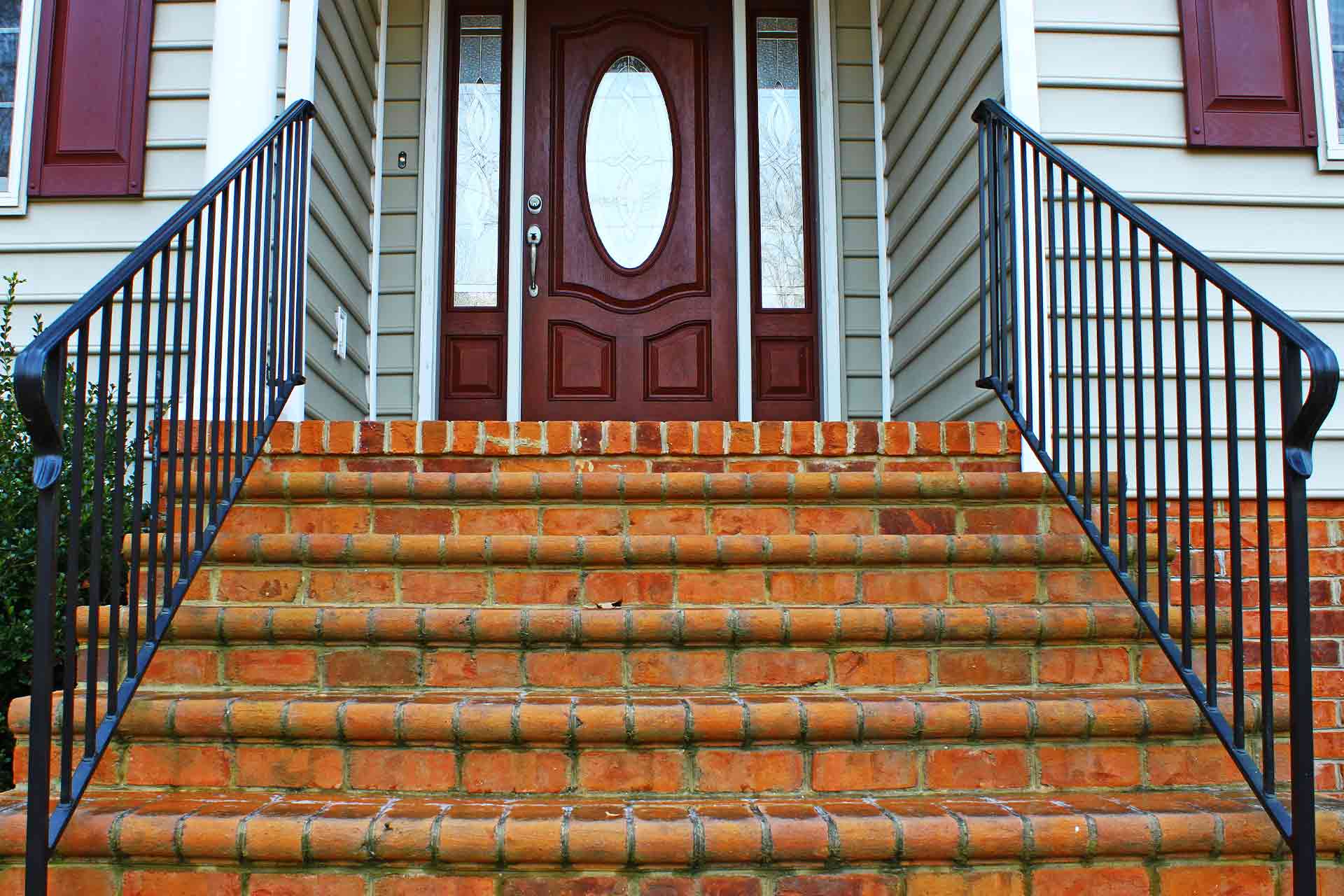

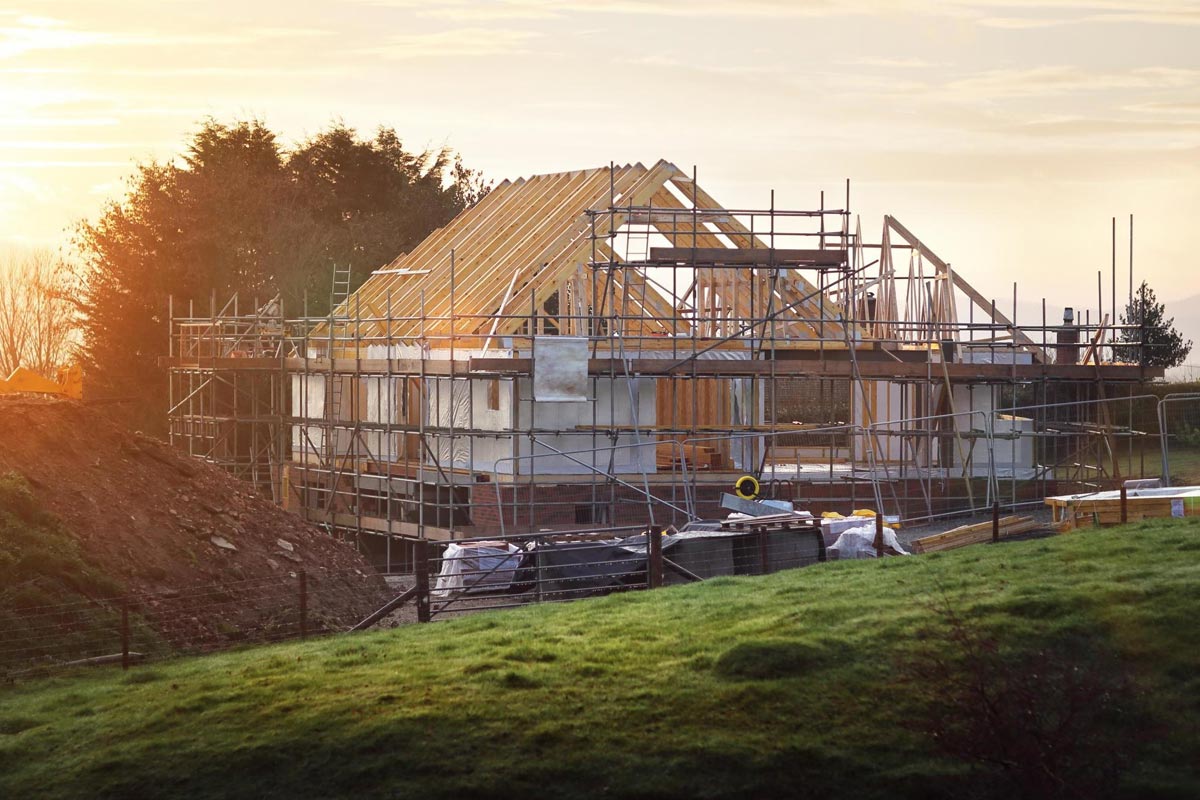

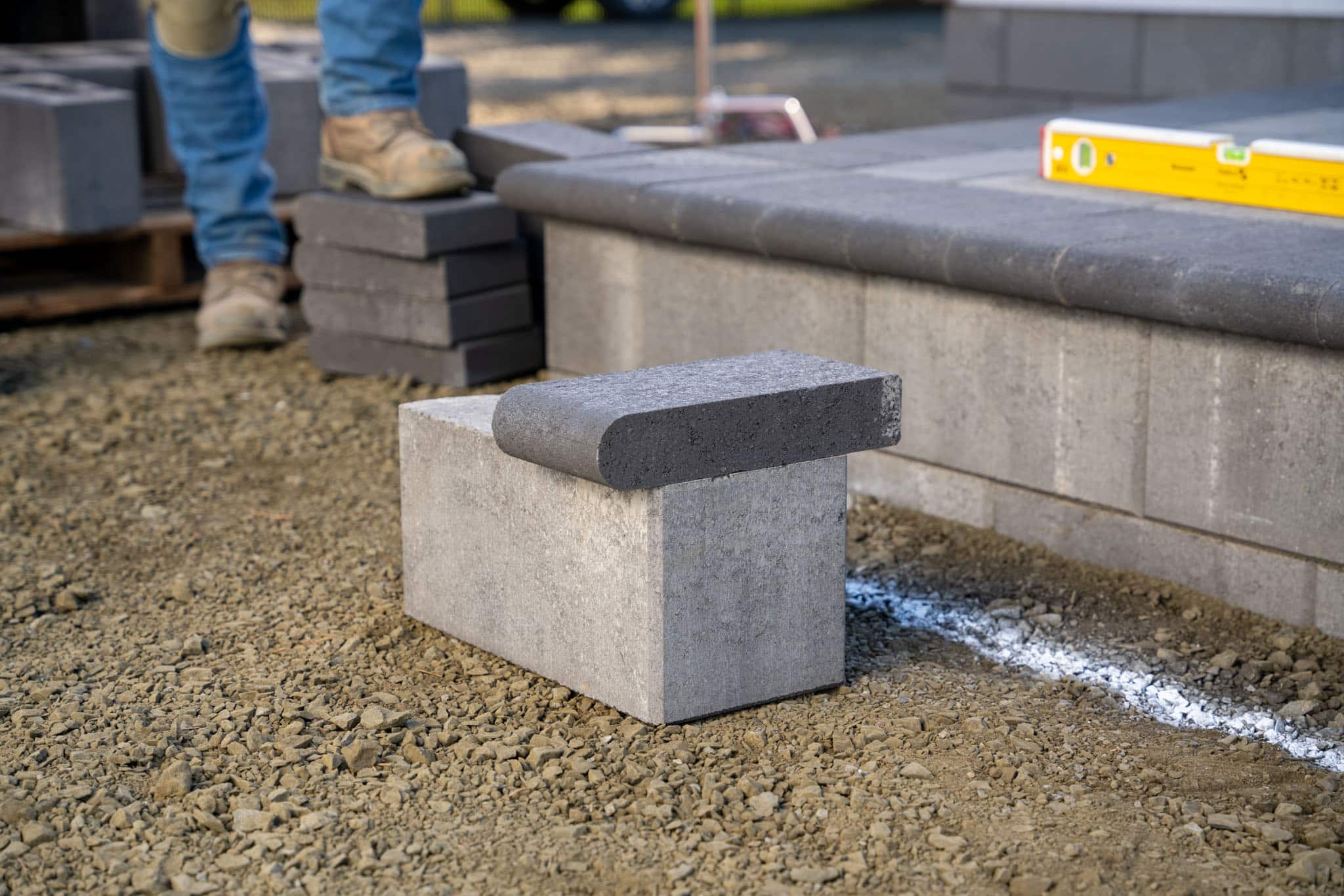


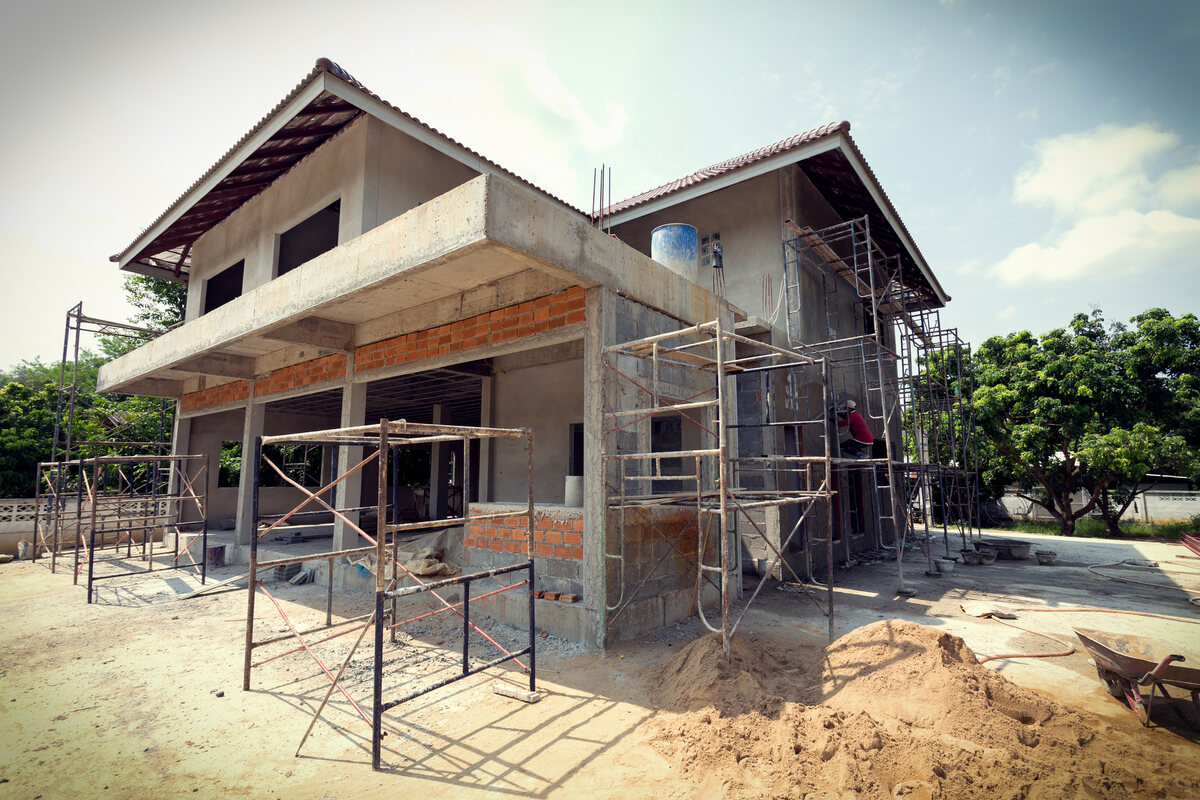
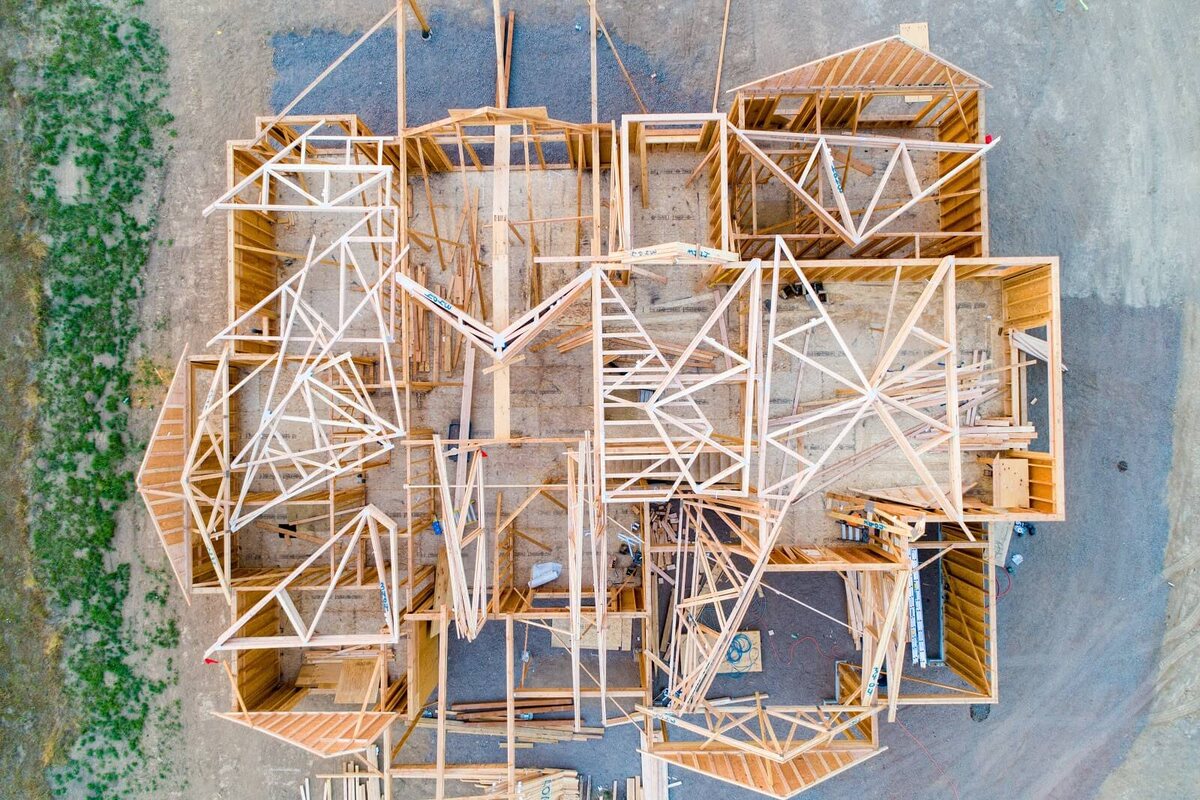
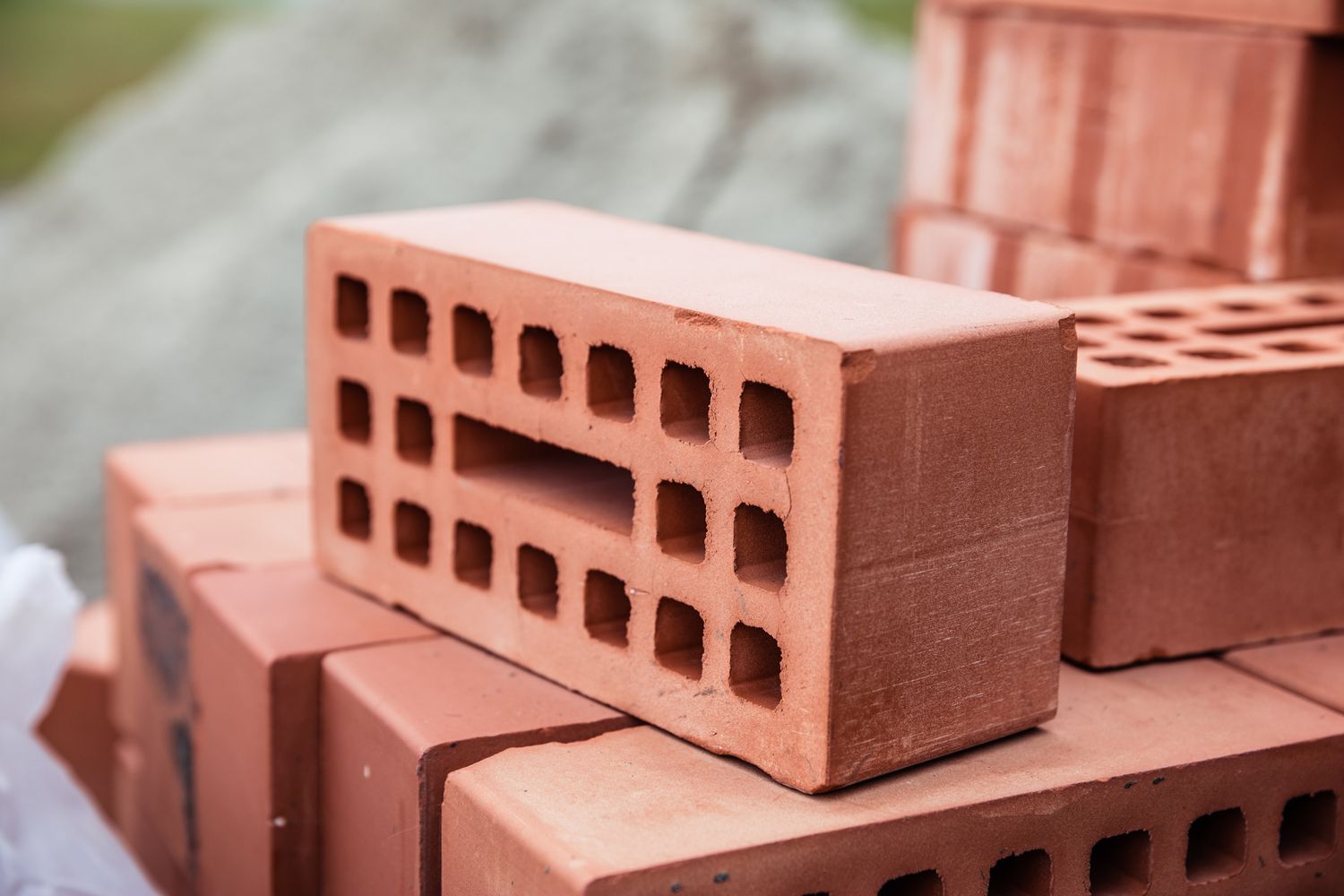
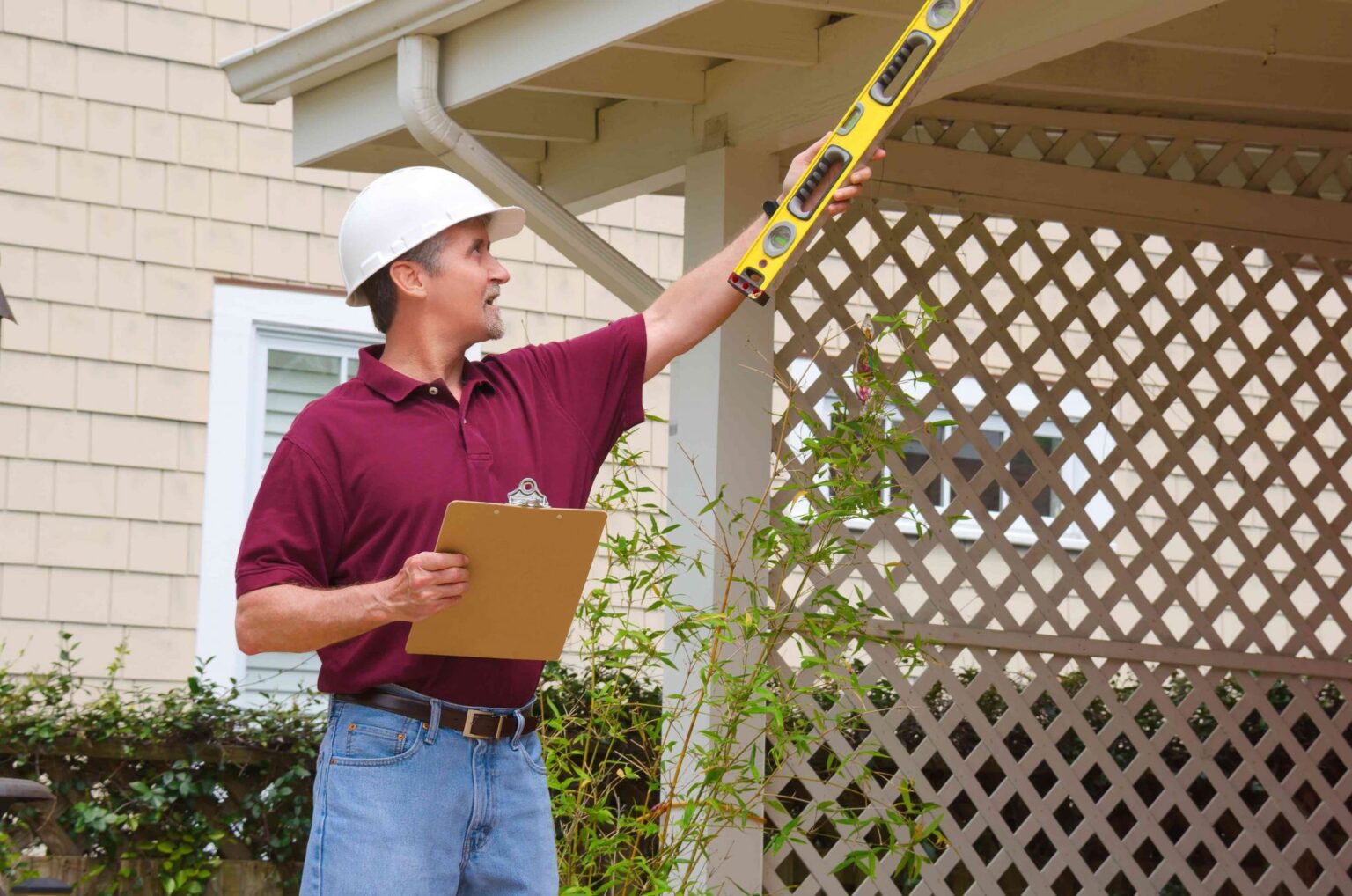


0 thoughts on “What Is The First Step To Building A House”